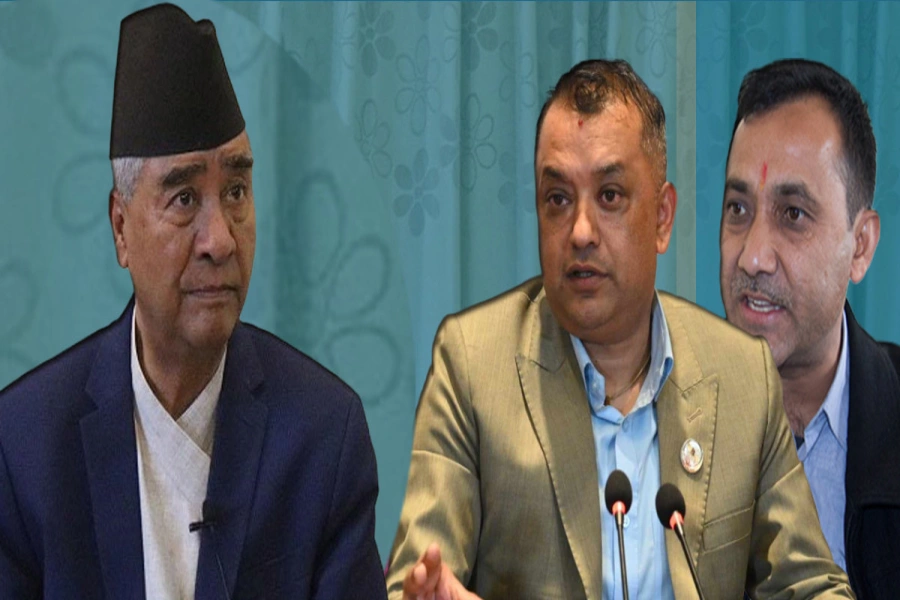Merger and acquisition contributes to raising the capital of the bank which will enhance its lending capacity and strengthen financial health
Big merger and force merger have become the subject of discussion in Nepal. There are different news and views about merger and acquisition in media. But many seem to lack clear understanding on merger and acquisition process. Merger and acquisition are tools to enhance organizational capacity. Merger involves the consolidation of two or more organizations into one with common objectives. Acquisition involves the takeover of one organization by another. Both operations have the same objective of enhancing organizational efficiency, which includes, among other things, reduction in cost, smoothness in operation and rise in profitability of companies.
Currently, there are 28 commercial banks with core minimum capital of eight billion rupees. It is said this number is much higher than we need. Experts are advocating for the need of larger banks with strong capital and financial health which can smoothly run required operation efficiently.
The size of commercial banks was quite small until 2015, with core capital of two billion. Monetary Policy (2016) required banks to increase their core capital to eight billion within mid-July 2017. This was done to increase the capacity of the banks. Merger, acquisition, issuing bonus shares, follow on public offer (FPO) and right share were seen as the means of achieving that goal. Save for issuing right share, all other mechanisms were sustainable. Only few banks opted for the recommended process. As of May this year, there have been 15 mergers and 25 acquisitions in commercial banking industry.
Prime Life, Union Life and Gurans Life ink a merger agreement

Merger and acquisition are expected to generate synergy effect and add value to the organization. This contributes to raising the capital of the bank which will enhance its lending capacity and strengthening financial health, which will enable the banks to deal with risks arising from various internal and external economic shocks. This is a necessary condition for financial stability. Otherwise, economy may be susceptible to crisis. Merger and acquisition help reduce operation cost and expand market coverage.
Nepali market is small and mostly urban-centered. The propensity of saving is also relatively low in comparison to other countries. So there are not enough fresh deposits in the market. Currently there is acute shortage of loanable funds in all banks and they are in dire need of the deposit collection. In this situation, banks compete to attract deposits by offering higher rates of interest and other schemes, which gives rise to unhealthy practices among banks and financial institutions.
Banking industry is one of the highly regulated industries in Nepal. The supervision of banks by Nepal Rastra Bank is quite stringent. If there is merger and acquisition between and among the banks, it would be easier for NRB to carry out supervision works.
Be that as it may, merger and acquisition have their own share of challenges as well. First of all, directors and top-level management should realize the need and utility of merger and acquisition. When they do, they need to work out partner selection. Selecting right partner is very crucial in this process. They need to take care of goodwill of their organization. Taking mutual consent from involving parties in terms of their authority and swap ratios is equally challenging. The settlement of the accounts and getting into new accounting system and procedure is complex and it requires more time and resource to settle it. Another major challenge is the adjustment of the employees. There may be disputes among the management and employees in terms of job role, job security, remuneration, compensations and other facilities. The management team will have to consider employee welfare as well as organizational welfare.
The synergy effect cannot be expected right after the merger. It takes some time to fit in all the components in the system and develop good coordination and communication among team members. But this should not be the reason to discourage merger and acquisition process.
Nepal’s banking industry needs to be enlarged. But this does not mean it should be done randomly without proper considerations. They need to consider many different factors while initiating and accomplishing the process. There should be a series of deliberation between banks and regulators on this matter. Banks and regulators need to demonstrate certain degree of flexibility. The government should play supportive role and introduce some incentives to encourage the banks to go for merger and acquisition.
Forceful merger won’t be good. It will take the banking industry to the opposite direction.
There is not any scientific theory for determining the accurate number of banks required in a particular economy. Thus rather than focusing on determining the number of the banks emphasis should be given on improving the quality and financial health.
The author is a researcher at Nepal Bankers’ Association. Views are personal




































